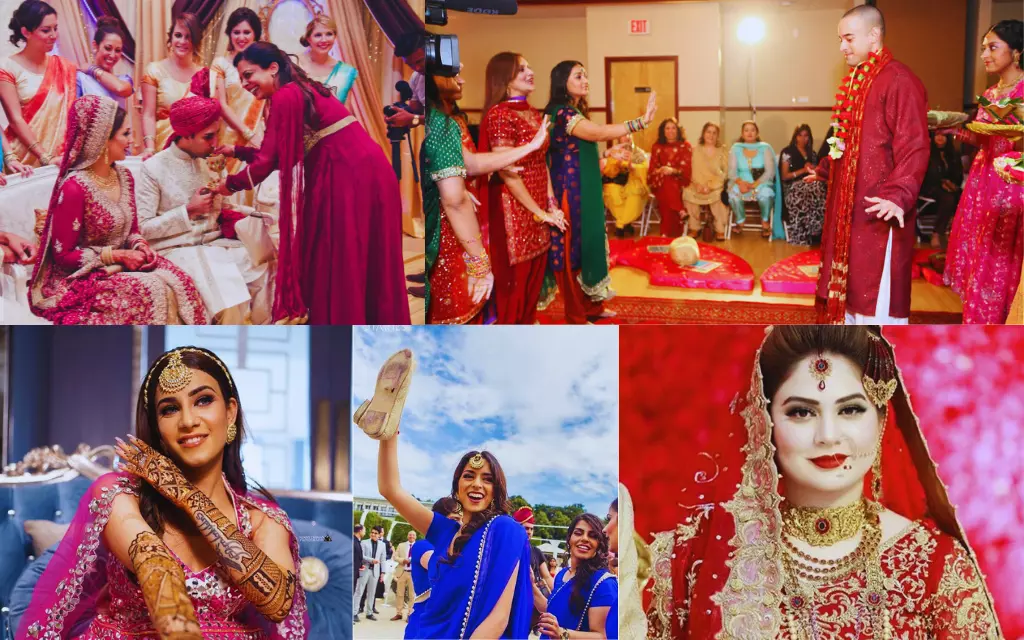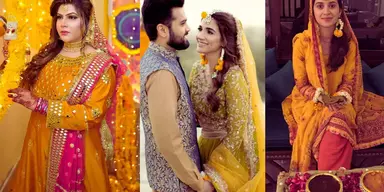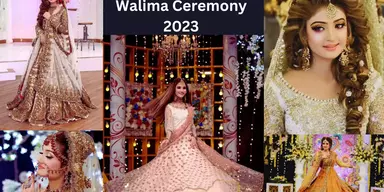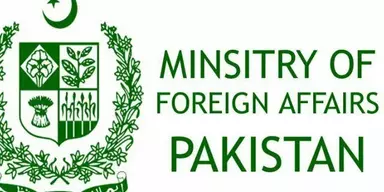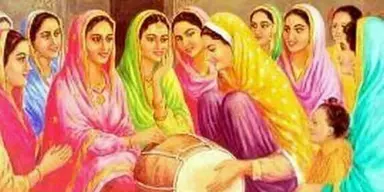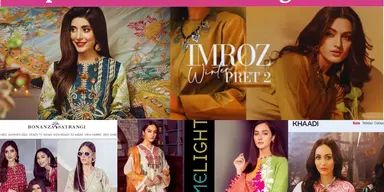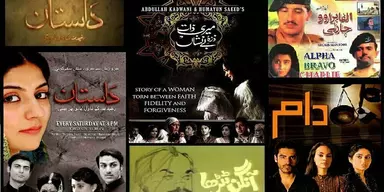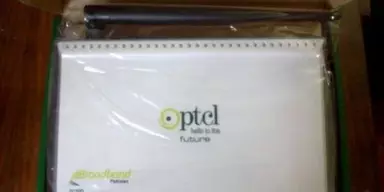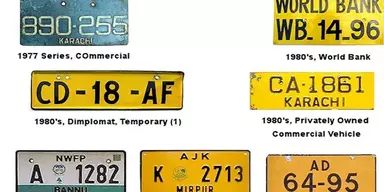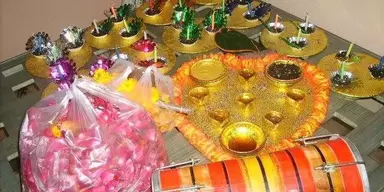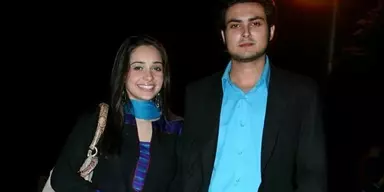Marriages in Pakistan are much more than just social gatherings; they are elaborate festivals with deep cultural meaning. Pakistani marriage rituals, or “rasams,” means a colorful tapestry woven from the country’s deep historical and cultural roots. These rams provide a new layer of significance, symbolism, and togetherness to the wedding celebrations. In this article, we dig into the exploring the Meaning and significance of Rasams in Pakistani Marriages.
In Pakistan culture, a marriage is much more than joining two people; it also involves joining two families. Marriages in Pakistan honor the couple’s love for one another and serve as a social and community-building event. Love, dedication, and joint obligations are all included in this holy union.
Exploring the complex web of rasam woven into the fabric of marriage ceremonies is essential to grasping the spirit of Pakistan’s marriage culture. Throughout the years, Pakistan has been influenced by a wide range of cultural traditions. All sorts of traditions and rites come together to make rasams a very special and meaningful celebrations.
Every detail of a Pakistani wedding is planned out months in advance. The prospective bride and groom’s families exchange proposalsto choose the most compatible couple possible. After a couple of consents to marry, their families will go through many rites and preparations. Dates, locations, logistics, and numerous rasams synchronization must be finalized as part of these preparations.
The engagement ceremony, or Mangni or Nikah-e-Fatiha, is a traditional first step toward marriage. The engagement ceremony marks the beginning of wedding preparations and celebrates the couple’s engagement. The bride and groom exchange rings before their closest friends and family members.
Pakistani marriages would not be complete without the colorful and celebratory mehndi ritual. The art of mehndi, in which elaborate henna patterns are applied to the hands and feet of the bride, plays a prominent role in this festival. During the mehndi celebration, family and friends gather to decorate one other’s hands with henna as traditional folk songs and dances fill the air.
The bridal procession of the groom, known as the Baraat, is an elaborate and spectacular part of every Pakistani wedding. The rites and festivities surrounding the Baraat signify honor and grandeur. Marriage traditions sometimes include the groom and his party driving up to the bride’s home or ceremony location in a specially adorned car.
The formal marriage ceremony, the Nikah, is a spiritual and meaningful occasion. The Nikah marks the beginning of a married couple’s life together and symbolizes their commitment. The contract between the bride and groom is formalized in the presence of a religious leader. During the ceremony, the couple will recite passages from the Quran, exchange vows, and sign legal paperwork.
After the Nikah, the groom’s family throws a reception called the Valima/Walima. The Valima is a gathering of the couple’s loved ones and friends to celebrate the wedding’s conclusion. There will be a huge feast and plenty of fun activities to express how grateful and welcoming the hosts are.
In this detailed article, we’ll go on a fascinating journey to discover the importance of Rasams and traditional part of wedding ceremonies in Pakistan. The richness and variety of Pakistani marital customs might be better appreciated by learning about these rasams.
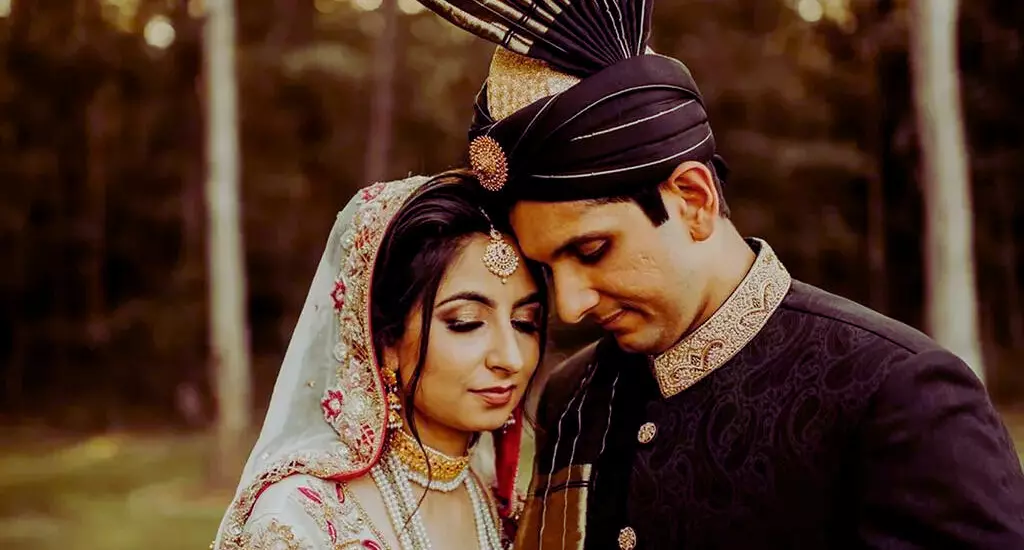
Additionally, we will investigate how wedding customs vary throughout Pakistan’s many regions and ethnic groups. Pakistan’s cultural diversity is on full display during the country’s many wedding rasam, which ranges from the colorful and boisterous Punjabi celebrations to the refined and solemn Sindhirites.
Furthermore, we shall discuss the significance and symbolism of each rasam. These observances are not only ceremonial; they have deep meaning and fulfill many functions. Each rasam has a unique purpose, whether to strengthen ties within the family or bless the new couple with a long and happy life together.
This article will explore the significance of rasams and how modern marriages in Pakistan are organized, celebrated, and seen in light of technological advancements, shifting gender roles, and international influences. In addition, we’ll talk about how contemporary marriage has changed Pakistani society.
This in-depth look into Pakistani rasams is meant to help foreigners better appreciate the cultural significance of these happy events. This article will be a helpful resource for anybody interested in learning more about the intricate and significant aspects of Pakistan’s culture, whether they are a Pakistani looking to reconnect with their cultural history or an outsider keen to learn about the beauty of Pakistani marriages.
In what follows, we’ll take an educational trip through the most important rasam at Pakistani weddings, learning about their rich traditions and the happiness they bring to people’s lives throughout the country and the world. We will delve deeply into each rasam, from the joyous mehndi rituals to the solemn Nikah and the spectacular Valima, to reveal the richness and cultural depth that make Pakistani weddings so special.
Please put on your seatbelts because we’re about to take a fascinating trip to explore the detailed meaning and significance of rasams in Pakistani marriages.
The Significance of Marriage in Pakistani Society
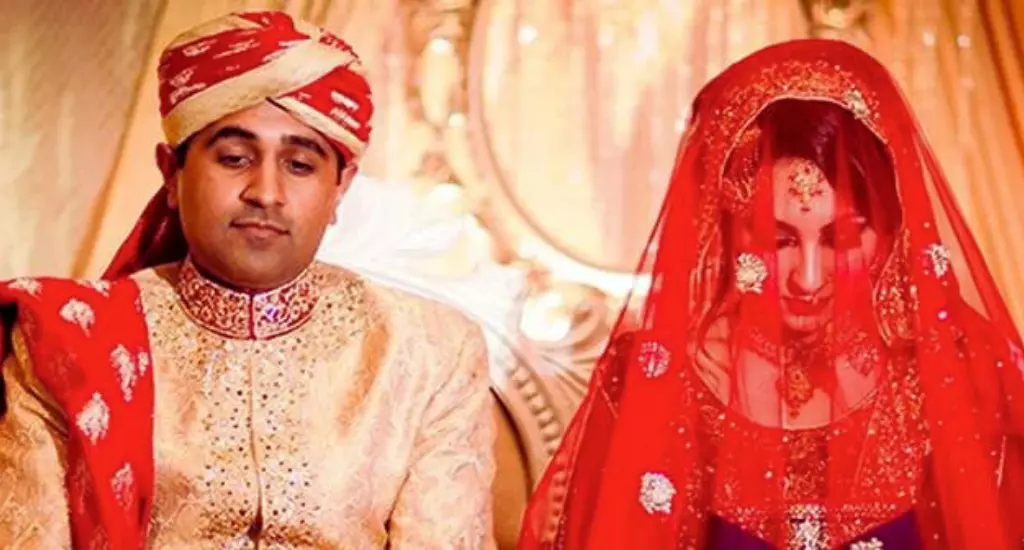
Marriage is considered a lifetime commitment between the bride and groom and between their respective families in Pakistani society. In Pakistani tradition, a marriage represents much more than the joining of two people; it also signifies the coming together of two families. It’s a holy vow that represents the beginning of a new chapter in your life with the person you love.
Marriage is considered a way to enhance family connections and develop alliances because of the importance placed on family in Pakistan. Parents and other relatives frequently arrange marriages with the mistaken idea that they know best regarding a couple’s compatibility and future happiness. Social standing, family name, and common morals are the only criteria used in planned marriages.
Marriage in Pakistan is more than the joining of two people; it is a social event that unites the whole neighborhood. It’s a moment when everyone pulls together to demonstrate how welcoming, kind, and united they can be. Family, friends, and even neighbors travel great distances to be a part of the wedding celebrations.
Marriage is significant in many cultures as a rite of passage from childhood into maturity. New duties within the home and community are taken on when people become adults. For women, marriage is especially significant since they are expected to create a family and ensure the continuation of the family line.
Religious beliefs heavily influence the importance of marriage in Pakistani culture. Marriage is highly valued in Islam, the religion practiced by most Pakistanis. It’s seen as a way to foster societal peace and harmony, strengthen families, and carry out one’s religious duties. The Islamic teachings that provide the groundwork for a happy marriage stress the significance of respect, love, and support between partners.
Marriage is very closely linked to cultural and traditional norms in Pakistan’s heritage. Every part of Pakistan has special traditions that are included in wedding ceremonies. These rituals, which may range from elaborate mehndi ceremonies to vibrant baraat processions, celebrate Pakistan’s diverse cultural past.
Marriage strengthens Pakistan’s social fabric and ensures the country’s continued existence by creating new generations. Additionally, marriage is seen as a way to maintain societal order and continuity. It lays out a path for people to follow in order to be good partners, parents, and citizens.
Traditional Wedding Preparations
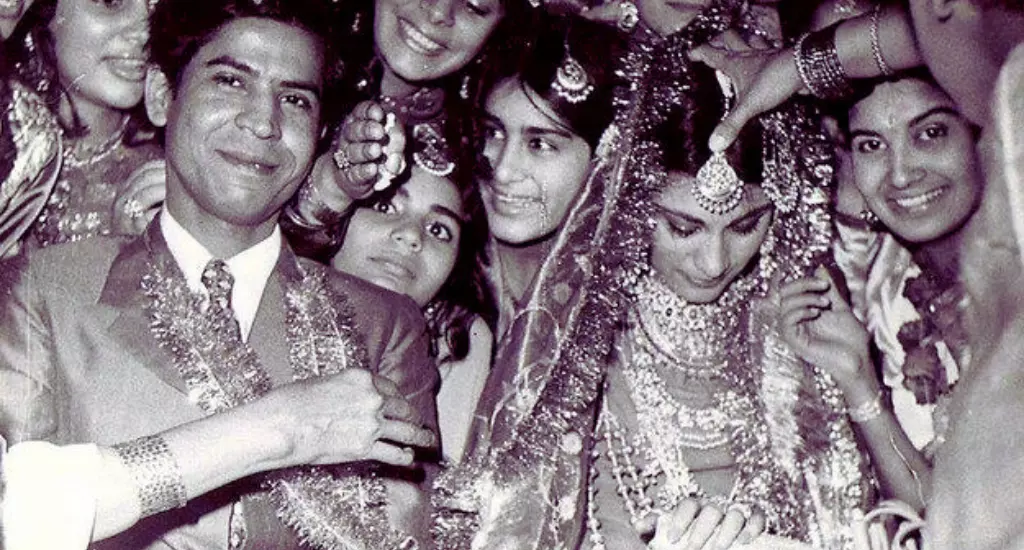
Traditional Pakistani wedding heritage are elaborate affairs that require months of planning. These actions include a set of rituals and preparations crucial to the party’s success.
The bride and groom’s family will initially exchange proposals as the first phase in the wedding planning process. Inquiries about the people’s backgrounds, social standings, levels of education, and compatibility are part of this procedure. The families continue talking and negotiating after a good match has been made.
The engagement party is the first step in serious wedding planning and a formal declaration of the couple’s commitment to one another. An official “Mangni” or “Nikah-e-Fatiha” engagement ceremony follows the first acceptance of the proposal. In this small, private ceremony, only immediate family members from both sides of the marriage are present to see the rings exchanged.
The selection of lucky dates for the wedding’s numerous celebrations is an important part of the planning process. Careful consideration is given to cultural norms, religious practices, and family traditions when settling on these dates. To choose the best times and days for the rituals, families sometimes seek the advice of astrologers and religious experts.
The location of the wedding is the next most important stage. Families in Pakistan put great effort into finding and designing lavish wedding venues to reflect the country’s reputation for extravagance. The venues are decorated lavishly with colorful draperies, floral arrangements, and intricate lighting to provide a joyful tone for the events. Depending on the guest count, wedding receptions may be hosted in various venues, including dining halls, marquees, or even the bride or groom’s home.
Planning for logistics is also an important aspect of a wedding’s planning. Families agonize over the meal, ensuring enough traditional treats to satisfy everyone. Planning a wedding means reserving cars for the “Baraat,” or wedding procession, booking hotels for out-of-town visitors, and organizing food and drink for many activities.
Choosing the bridal gown and accessories is also vital to the wedding planning process. There is a widespread belief that Pakistani brides wear the most beautiful wedding dresses in the world. To ensure the bride’s dress honors cultural norms and her sense of style, she often visits many designers and talks it over with her family.
The groom’s outfit is also selected with great care, considering ethnic norms and preferences. Grooms, too, want to make a fashion statement with their wedding garb, donning anything from classic sherwanis to tailored suits.
Jewellery, like garments, is given significant attention at Pakistani weddings. Gold and gemstone jewelry are gifts of prestige, riches, and good fortune from the groom’s family to the bride. The bride traditionally accessorizes her wedding day look with many traditional jewelry items, including a necklace, earrings, and bangles.
In Pakistan, many people outside the immediate family participate in the wedding preparations. Family, friends, and neighbors all pitch in to help plan the big day, from sending out invitations and sourcing gifts to hosting showers for the bride-to-be and running dance rehearsals for the mehndi ceremony.
The Engagement Ceremony
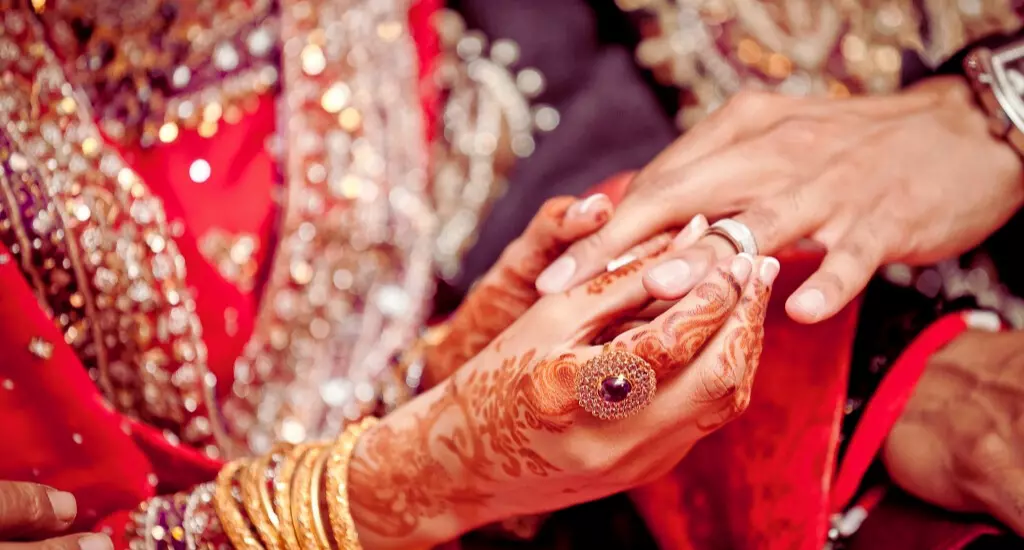
In Pakistani culture, the “Mangni” or “Nikah-e-Fatiha” engagement ritual is important. It’s a public declaration of the couple’s love for one another and the first step in official wedding planning. Family members from both sides of the wedding party usually attend the engagement ceremony to see the bride and groom exchange rings.
The engagement ceremony is very significant both culturally and symbolically in Pakistani culture. It symbolizes the union of two families and the public announcement of the couple’s plan to wed. A couple’s acceptance of marriage and the start of a new chapter in their life is symbolized by the giving and receiving of wedding rings.
Traditionally, only the bride and groom’s immediate family members attend the ceremony in one of their homes. The setting is often cozy and informal, perfect for having meaningful talks and building family ties. The location has a festive and welcoming vibe thanks to the floral arrangements and traditional decorations.
At the engagement party, the families show their mutual gratitude with a gift exchange. The bride-to-be receives “Mehr,” a regular giving of money or precious items from the groom’s family, as a sign of the groom’s promise to provide for his future wife. The groom’s family expresses their approval of the marriage by delivering presents to the bride’s family.
The giving and receiving of engagement rings are a significant part of most engagement ceremonies. The rings are carefully chosen and often include elaborate patterns and priceless diamonds. Members of the couple’s family and friends will pray for the couple’s future happiness and prosperity as they watch them exchange rings.
The engagement party is also a great time for the families to meet and get to know one another. It’s a great way to get to know one another and deepen the tie between the two families. Members of the same family often feel a stronger bond with one another after conversing, sharing tales, and laughing together.
The engagement party isn’t complete without some tasty treats and drinks. From savory nibbles to sweet desserts, you may enjoy a wide variety of authentic Pakistani cuisine. The cuisine is a delicious reflection of the visitors’ ethnic tastes and geographical delicacies. The unity and joy are amplified when people have a meal together.
Capturing the special moments of an engagement ceremony via photography and videos is essential. These pictures will always be a memory of the love and happiness the couple and their family felt on their special day. Hiring a professional photographer guarantees that your special moments will be captured forever.
Mehndi: The Festive Celebration of Henna
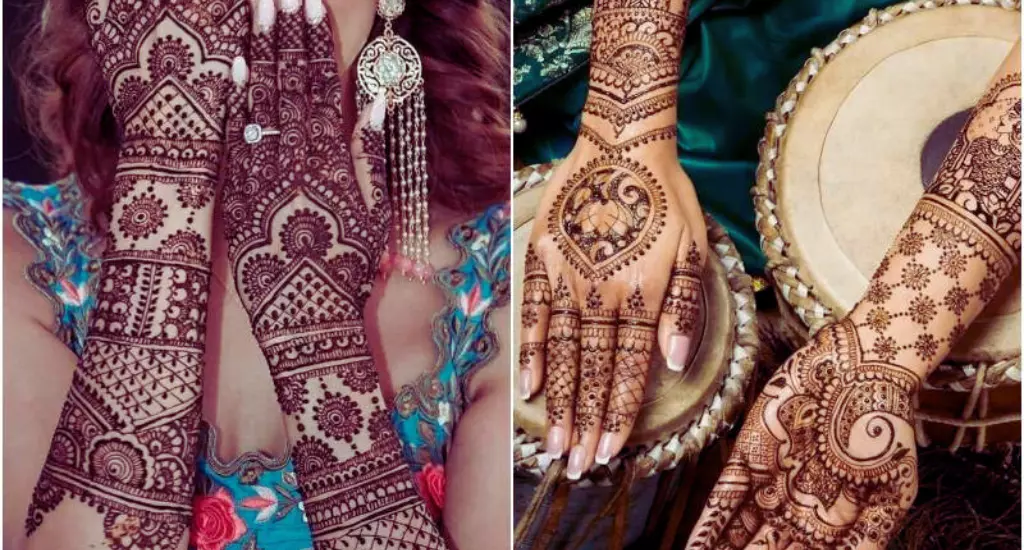
Mehndi rasam is integral to Pakistani culture since it symbolizes life and happiness. It is a celebration held before a wedding and includes musical performances, dancing, and elaborate henna tattoos. Mehndi is more than just a religious rite; it’s also a time for the bride, groom, and their loved ones to celebrate and have a good time.
The Mehndi ritual is traditionally held the day before or after the wedding. Expectations are high since the event is split between the households of the bride and groom. Decorations, drapery, and flower arrangements in vibrant hues create a cheery, celebratory atmosphere at the site.
The Mehndi ceremony’s high point is when the bride and her female relatives get elaborate henna tattoos on their hands and feet. Expert henna artists design elaborate designs and motifs that carry meanings of loveliness, happiness, and prosperity. The likes of the bride and her family are reflected in the various designs, which vary from simple flower motifs to complex geometrical forms.
The bride is not the only one with hands painted with henna. Female friends and family members join in the festivities by getting henna patterns painted on their hands to show solidarity and joy. It’s a chance for the ladies to get together, reminisce, and celebrate. The “Mehndi dances” are spirited routines performed to traditional wedding music and contribute to the celebratory atmosphere.
Fasting traditional dishes and sweets is customary during the Mehndi ritual. The menu includes delicious sweets and savory main courses, including biryani, samosas, and kebabs. The dishes on the menu highlight Pakistan’s diverse culinary tradition, pleasing visitors’ palates and contributing to the party atmosphere.
Mehndi ceremonies wouldn’t be complete without the music. Songs performed and sung during the event are called “Mehndi songs” or “Mayun songs,” and they are traditional songs sung in celebration of the Mehndi ritual. Traditional instruments like the dholak and harmonium are often used to accompany these songs, adding to the upbeat and celebratory nature of the performance. Celebration songs and dances are performed by guests who joyfully join in.
Other traditional rasams performed on Mehandi Day include:
Tappy Music The Rasam at the Mehndi: Rejoicing to Traditional Music
Traditional music and dancing during a Pakistani wedding, known as the Mehndi ceremony, is meant to create a festive mood. Tappy songs are traditional folk songs sung and performed throughout the Mehndi ceremony. Their catchy beat and lyrical content never fail to captivate the audience. The Tappy Songs Rasam is a practice that helps get people in the holiday mood.
Family, friends, and visitors came together to sing and dance to traditional happy songs as part of the Tappy Songs Rasam. These tunes’ speed, rhythm, and melody are all reasons to dance. The lyrics are often sung in a regional language like Punjabi, Sindhi, or Pashto and capture the pleasure of love, friendship, and celebration.
A troupe of singers or musicians, often including dhol players (traditional drums), leads the happy song performances during the Mehndi ritual. They get the crowd involved and up on their feet for some singing and dancing. Guests get up and move to the enticing beats of the tappy music by forming circles or dancing in couples.
The Tappy Songs Rasam is more than simply a concert; it’s an opportunity for loved ones to spend quality time together, laugh and rejoice. It makes the Mehndi event more memorable for everyone involved by fostering a spirit of togetherness and happiness. The Tappy Songs Rasam adds a sense of festivity and joy to the occasion with its lively music and spirited dancing.
Traditional Pakistani marriage culture wouldn’t be complete without the Mehndi ritual and accompanying Tappy Songs Rasle. People of all ages and walks of life may be found at the Tappy Songs Rasam, singing and dancing to the infectious beats of traditional folk mu. It’s a chance for everyone to let their hair down, experience the local traditions, and rejoice in the joyous marriage of two people.
Baraat: The Grand Wedding Procession
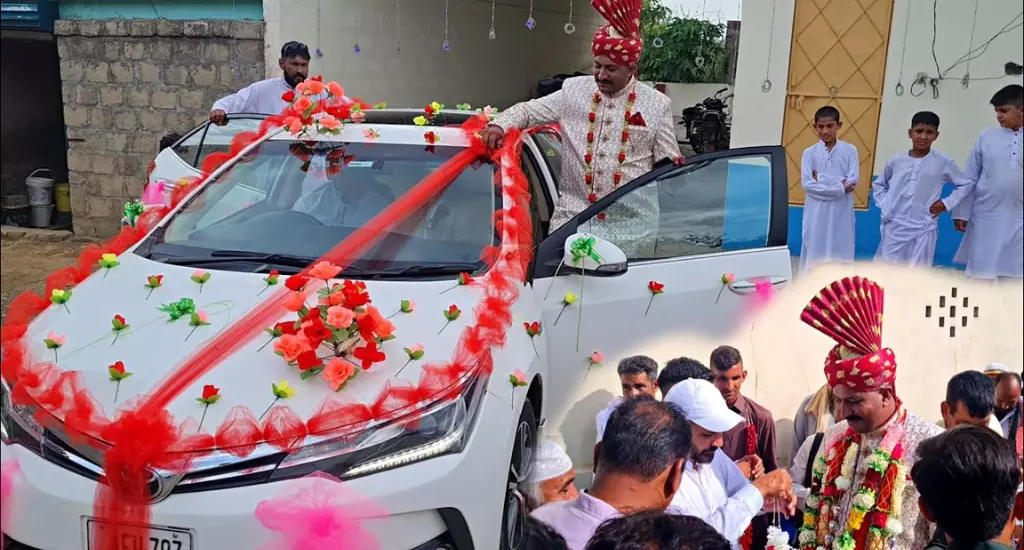
The baraat is a spectacular part of traditional Pakistani weddings. The wedding procession is a festive parade that follows the groom as he travels to the bride’s house or wedding location. People who attend the Baraat will never forget the music, dancing, and show of wealth that characterize the celebration.
The Baraat procession comprises the groom’s closest friends and family. Traditional wedding processions include guests arriving on horseback or in elaborately adorned vehicles at the ceremony site. The traditional groom’s outfit lends an air of pomp and ceremony to the wedding procession.
The Baraat parade wouldn’t be complete without the lively tunes accompanying it. The rhythmic clapping of hands, the melodic trumpet notes, and the pounding of drums create an electric environment that invigorates and inspires the march. The Baraat is accompanied by a band, often known as a “brass band,” which plays traditional wedding music and current hits.
The Baraat parade would be incomplete without the dancing. The groom’s family and friends celebrate by dancing beside his car. The dancing steps represent the ethnic variety and individual tastes of the participants, ranging from traditional folk dances to more modern genres. The sight of the Baraat is only enhanced by the participants’ colorful dresses and lively dancing.
As it makes its way through the streets, the Baraat procession will get some attention. All who observe the parade are filled with festivity and happiness. People from all walks of life congregate to take part in the splendor and bestow their best wishes and blessings on the groom and his party.
The bride’s family greets the groom and his party as the Baraat enters the wedding location. The bride’s family welcomes the Baraat with open arms by showering them with rose petals and serving them customary refreshments. The wedding ceremony may now officially commence as the two families are joined in this symbolic manner.
The groom’s entrance in the Baraat procession is more than a ceremonial event. It publicly displays the families’ money, prestige, and social position. The desire to have a wedding that everyone will remember may be seen in the elaborate car decorations and expensive wedding apparel.
The value of photography and videography in documenting the spirit of the Baraat march cannot be overstated. Professional photographers and videographers are brought in to capture all of the splendor, happiness, and celebrations. The couple and their families will be able to recall the joy and splendor of the Baraat via the images and films for years to come.
The following rasam are performed on Barat day:
Rasta Rokna Rasam: The Ritual of Delaying the Departure
This is a major component of Pakistani wedding rasam and customs. It occurs just before the bride and groom transition from their parental house to the groom’s. This touching ceremony marks the bride’s last goodbye to her childhood home and the beginning of her new life as a married woman.
Family members, especially the bride’s siblings and close relatives, create a joyful but emotional environment throughout the Rasta Rokna Rasam. As a symbolic gesture of their unwillingness to let go of their loved one, they playfully obstruct the way of the leaving car. This gesture symbolizes their want to spend a little more time together and to extend the joy of making new home-based memories.
During the Rasta Rokna Rasam, the bride and groom’s families engage in friendly bargaining and emotional dialogues. It’s a touching moment when the bride and groom affirm their mutual love for one another and the husband’s responsibility to care for and nurture the bride.
As the bride begins a new chapter in her life, the Rasta Rokna Rasam symbolizes her family’s unbreakable links of love and support. A beautiful and unforgettable moment is created for the bride and her loved ones throughout this rite. They may think on the past, enjoy the present, and plan for the future in this way.
Jota Chupai Rasam: The Playful Shoe-Hiding Ritual
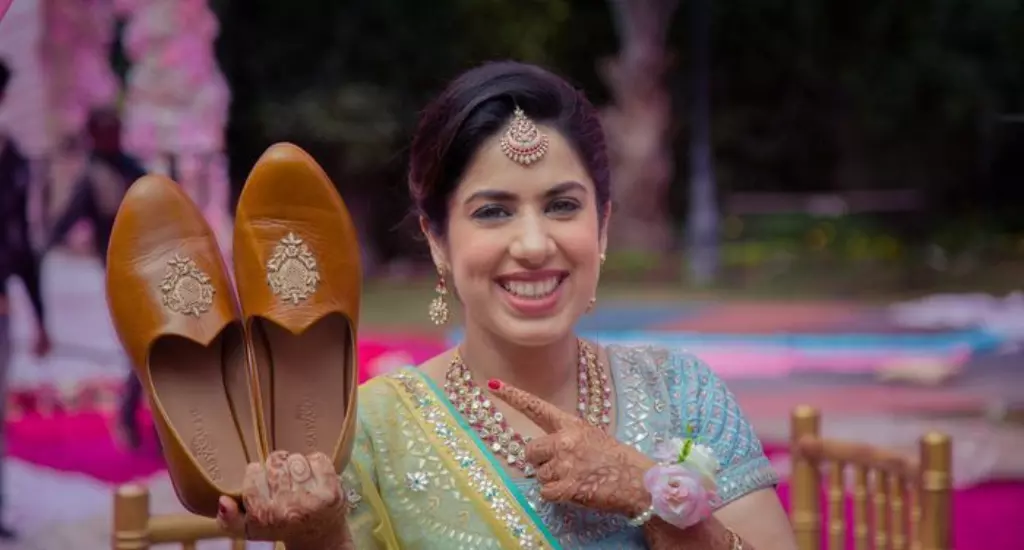
Traditional rasams in Pakistani wedding festivities include the lighthearted and humorous Jota Chupai Rasam, also known as Joota Chupai or the Shoe-Hiding Ritual. The custom, in which the bride’s female relatives and friends playfully take and hide the groom’s shoes, adds an element of fun and camaraderie to the celebration.
Jota Chupai Rasam is traditionally performed at a Nikah or a Valima reception. The tradition calls for the groom to take his shoes off upon entering the venue and leave them at the door. The bride’s female relatives and friends grab the moment to start a game of wit and humor by hiding the bride’s shoes.
Jota Chupai Rasam calls for the groom’s side to guard the bride’s shoes while the latter tries to conceal them stealthily. The shoes are jokingly protected from theft by the groom’s male relatives and friends. The bride’s female relatives and friends band together to create a fierce squad that uses cunning and speed to outmaneuver the groom’s party.
During the game, the two teams may frequently engage in friendly banter and taunting. To break the ice and facilitate communication and bonding between the couple’s respective families, the Jota Chupai Rasam is performed. It makes everyone at the wedding party happy and adds a dash of excitement to the festivities.
The bridegroom must make a deal with the bride’s family to get his shoes back. If you return his shoes, he may reward you with money, gifts, or favors. With the bride’s side typically engaging in lighthearted bargaining and amusing demands, this part of the negotiations will surely have the groom on the edge of his seat.
Jota Chupai Rasam is more than just a fun activity; it represents the friendship and solidarity of the two families. It embodies the cooperative and humorous attitude that ought to follow the union of two families in marriage. The ceremony’s fun atmosphere helps cement the newlyweds’ relationships with their friends and family.
Doodh Pilai Rasam: The Milk Drinking Ritual
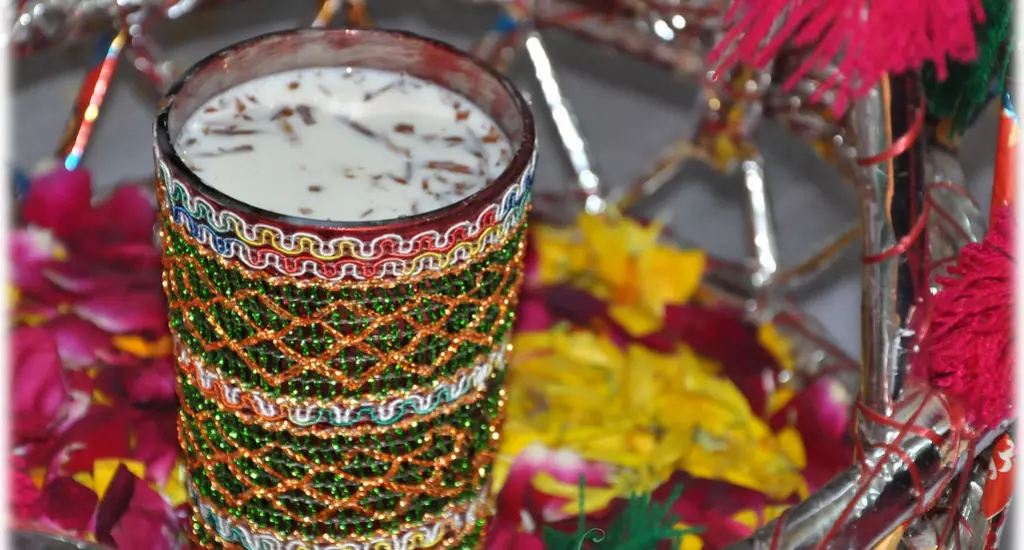
Pakistani rasams in wedding ceremonies aren’t complete without the traditional Doodh Pilai Rasam or Milk Drinking Ritual. After the Nikah ceremony or during the Valima celebration, the bride’s sisters or other female relatives will give the groom milk.
A glass of milk is given to the groom by the bride’s sisters or other female relatives at the Doodh Pilai Rasam. However, they add humor by stirring a little black pepper or turmeric into the milk. This prank is played on the groom to see how patient and good-natured he can be.
The groom cheerfully takes the glass of milk and sips from it, symbolizing his readiness to face whatever difficulties may emerge in married life. It’s a way for him to show his love and devotion to the bride and her family.
Doodh Pilai Rasam gatherings often include humorous conversation, and hearty belly laughs. It’s an opportunity for the bridegroom’s and bride’s female relatives to have a moment of fellowship and grow closer to one another due to their shared joy during the wedding.
This lighthearted custom is not only a lot of fun for guests but also represents the groom’s flexibility and readiness to embrace the bride’s culture and customs. It’s a good reminder that a happy marriage takes adaptability, good humor, and openness to new experiences.
Nikah: The Sacred Marriage Ceremony
Regarding Pakistani weddings, the Nikah is the most important and revered part of the ceremony. There is great symbolic and theological weight to this act. In the presence of an Islamic scholar or religious authority, the couple, their families, and witnesses come together for the Nikah ceremony.
Nikah ceremonies are traditionally held in a mosque or a specially prepared part of the wedding reception hall. Members of the couple’s immediate families and friends assemble to observe the ceremony and offer their best wishes. The mood is respectful and quiet, befitting the gravity of the event.
Readings from the Holy Quran, religious words, and prayers kick off the ritual. The couple is led through the procedure by an Islamic scholar or religious authority who explains their rights and obligations as husband and wife according to Islamic beliefs. The couple listens carefully and then nods their heads to show they agree to join this holy union.
The Nikah ceremony’s high point comes during the reading of the marriage contract. This contract acts as a legal instrument recognized by the state and sets out the rights and duties of the parties within the framework of Islamic law. The bride and groom sign the marriage contract in the presence of witnesses who attest to their love and commitment to each other.
Prayers are said for the couple’s future happiness, success, and blessing after the contract is signed for marriage. The couple receives warm greetings and blessings from their loved ones. As the newlyweds begin their lives together, everyone around them is overcome with happiness and anticipation.
It is traditional for the couple to exchange rings after the Nikah ceremony further to symbolize their love and devotion to one another. Witnessed by their loved ones, this interaction symbolizes the link and oneness between the two people.
Pakistani society’s cultural and religious values are reflected in the Nikah ceremony. It highlights the significance of a couple’s shared beliefs, dedication, and mutual respect in marriage. It’s a holy moment that sets the tone for a lifetime of mutual love and support between the partners.
Valima: The Reception Feast
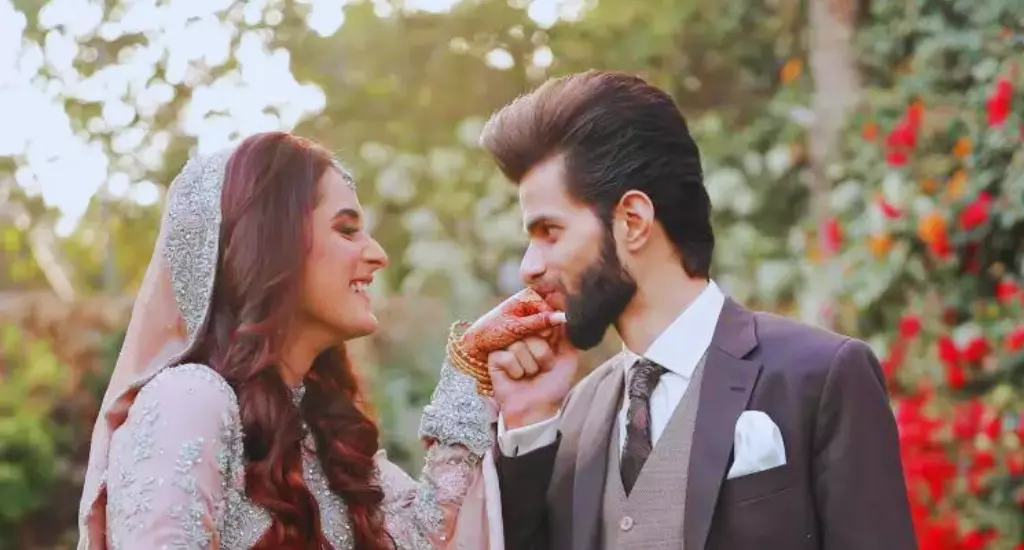
The reception feast, known as the Valima, follows the Nikah ceremony and is an important part of Pakistani wedding customs. A wedding reception is a joyous occasion when friends, family, and well-wishers assemble to bless and congratulate the newlyweds on their marriage.
The Valima celebration takes place several days after the Nikah, giving the newlyweds time to unwind and enjoy the celebrations after the solemn religious rite. The groom’s family often hosts this event, which is celebrated in a relaxed and friendly manner.
Valima celebrations are often held in opulently decorated dining halls, hotels, or even outdoors. The ambiance is warm and pleasant thanks to the candles, flower arrangements, and other decorative touches.
The cuisine at the Valima is designed to please all the senses, from the fragrant kebabs and tasty biryanis to the delicious sweets and refreshing beverages. The tasty and extravagant feast is a highlight of the Valima ceremony. There is usually a large selection of traditional Pakistani foods and other cuisines worldwide on the menu.
The Valima is also a chance for the couple to properly meet and welcome their friends, relatives, and guests. The guests shower the newlyweds with love and support by showering them blessings, gifts, and congrats. During this time, family and friends may get together to enjoy each other’s company and create lasting memories.
The Valima festival isn’t complete without music and dancing. Dance performances are held in honour of the newlyweds, and guests get into the spirit by joining in with gusto. Guests are entertained by live music bands or disc jockeys playing a range of songs from the past and present.
The value of photography and film in documenting the Valima event cannot be overstated. Professional photographers and videographers are engaged to record the festivities to ensure that the memories of this happy moment last a lifetime. The couple and their family will be able to relive the joy and love they felt on their wedding day thanks to these pictures and recordings.
Sources
- Kreienberg, M. (2022). “What Will Weddings Look Like in the Age of Social Distancing?” Brides https://www.brides.com/weddings-and-social-distancing-4845947
- WorldExpeditions (2023). “Cultural Festivals Around the World” WorldExpeditions https://worldexpeditions.com/blog/cultural-festivals-around-the-world
- NIMRA (2023). “Interesting Facts about Sanam Jung’s Wedding” Style https://style.pk/interesting-facts-about-sanam-jungs-wedding/
- CambridgeDictionary (2022). “Ritual” CambridgeDictionary https://dictionary.cambridge.org/dictionary/english/ritual
- Roland, G. (2020). “The deep historical roots of modern culture: A comparative perspective” ScienceDirect https://www.google.com/url?esrc=s&q=&rct=j&sa=U&url=https://www.sciencedirect.com/science/article/pii/S0147596720300111&ved=2ahUKEwjmypSGioH_AhXhVqQEHSSxBkcQFnoECAsQAg&usg=AOvVaw0SUEdUdYax_83ph77kJAdz
- Couio (2019). “WEDDING SYMBOLISM: ALL SYMBOLS EXPLAINED” SicilianWeddingandEvent https://www.sicilianweddingandevent.com/wedding-symbolism/
- RedWaterEvents (2022). “What is a Celebration of Marriage? Everything You Need to Know” RedWaterEvents https://www.redwaterevents.com/blog/what-is-a-celebration-of-marriage-everything-you-need-to-know
- Ali, A. (2022). “Most Popular Pakistani Wedding Traditions” Desiblitz https://www.google.com/url?esrc=s&q=&rct=j&sa=U&url=https://www.desiblitz.com/content/most-popular-pakistani-wedding-traditions&ved=2ahUKEwik0L6hi4H_AhWTTKQEHXObCRQQFnoECAsQAg&usg=AOvVaw1nXZB7LpyrI9yYvUA1Qpc8
- Definitions.net (2023). “Definitions for marriage proposal” Definitions.net https://www.definitions.net/definition/marriage+proposal
- Castagnola, E., Ansaldo, A., Maggiolini, E., Angotzi, G. N., Skrap, M., Ricci, D., & Fadiga, L. (2013). “Biologically compatible neural interface to safely couple nanocoated electrodes to the surface of the brain.” ACS nano https://pubs.acs.org/doi/abs/10.1021/nn305164c
- Probert, R. (2019). “Marriage law and practice in the long eighteenth century: a reassessment.” Cambridge University Press. https://books.google.com.pk/books?hl=en&lr=&id=ovFg_xZLy8oC&oi=fnd&pg=PR9&dq=couple+of+consents+to+marry&ots=b7CgGsjSbH&sig=AKUzdPOjzQ1fNzZTcswai8VXtzY&redir_esc=y#v=onepage&q=couple%20of%20consents%20to%20marry&f=false
- Potarca, G. (2020). “The demography of swiping right. An overview of couples who met through dating apps in Switzerland.” PLoS https://journals.plos.org/plosone/article?id=10.1371/journal.pone.0243733
- UrduPoint (2023). “Urdu Word منگنی Meaning in English” UrduPoint https://www.urdupoint.com/dictionary/urdu-to-english/mangni-meaning-in-english/9865.html
- Louis, St. (2023). “Just get Engaged? Congratulations!” StLouisWeddingChapel https://www.google.com/url?esrc=s&q=&rct=j&sa=U&url=https://www.stlouisweddingchapel.com/engagement_ceremony.html&ved=2ahUKEwi78o71jYH_AhXOuaQKHdMdD9QQFnoECAAQAw&usg=AOvVaw2hwdE9leqTdiDaXy9PCaTt
- Alsalami, Z. (2023). “I need to know what is the meaning of Nikah in Islam?” Al-Islam https://www.al-islam.org/ask/i-need-to-know-what-is-the-meaning-of-nikah-in-islam
- Werbner, P. “Ritual, Embodiment and Creativity in the Muslim Diaspora: Transnational Migrations and Symbolic Returns. In Routledge Handbook of Islamic Ritual and Practice” Routledge https://www.taylorfrancis.com/chapters/edit/10.4324/9781003044659-42/ritual-embodiment-creativity-muslim-diaspora-pnina-werbner
- Raniwala, P. (2021). “Everything You Need to Know About the Baraat” Brides https://www.brides.com/indian-baraat-5075885
- Cencage (2019). “Nikah” Encyclopedia https://www.collinsdictionary.com/dictionary/english/nikah
- Al-Islam (2023). “Walima” Al-Islam https://www.al-islam.org/tags/walima
- Abbasi, M. H., David, M. K., & Ali, H. M. (2021). “Cultural Maintenance in the Face of Language Shift-Young Sindhi Muslims in Karachi, Pakistan.” University of Chitral Journal of Linguistics & Literature https://jll.uoch.edu.pk/index.php/journal10/article/view/283

